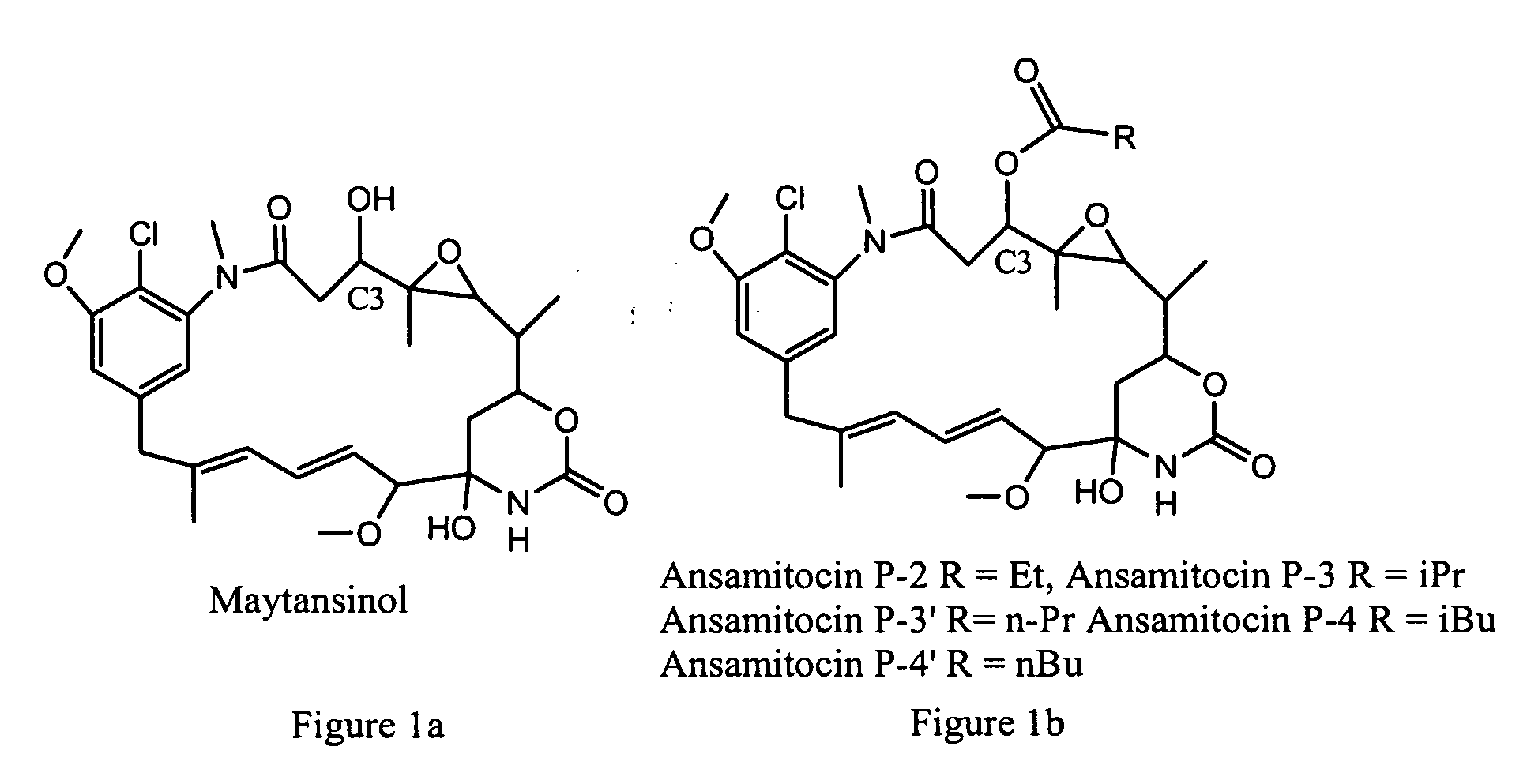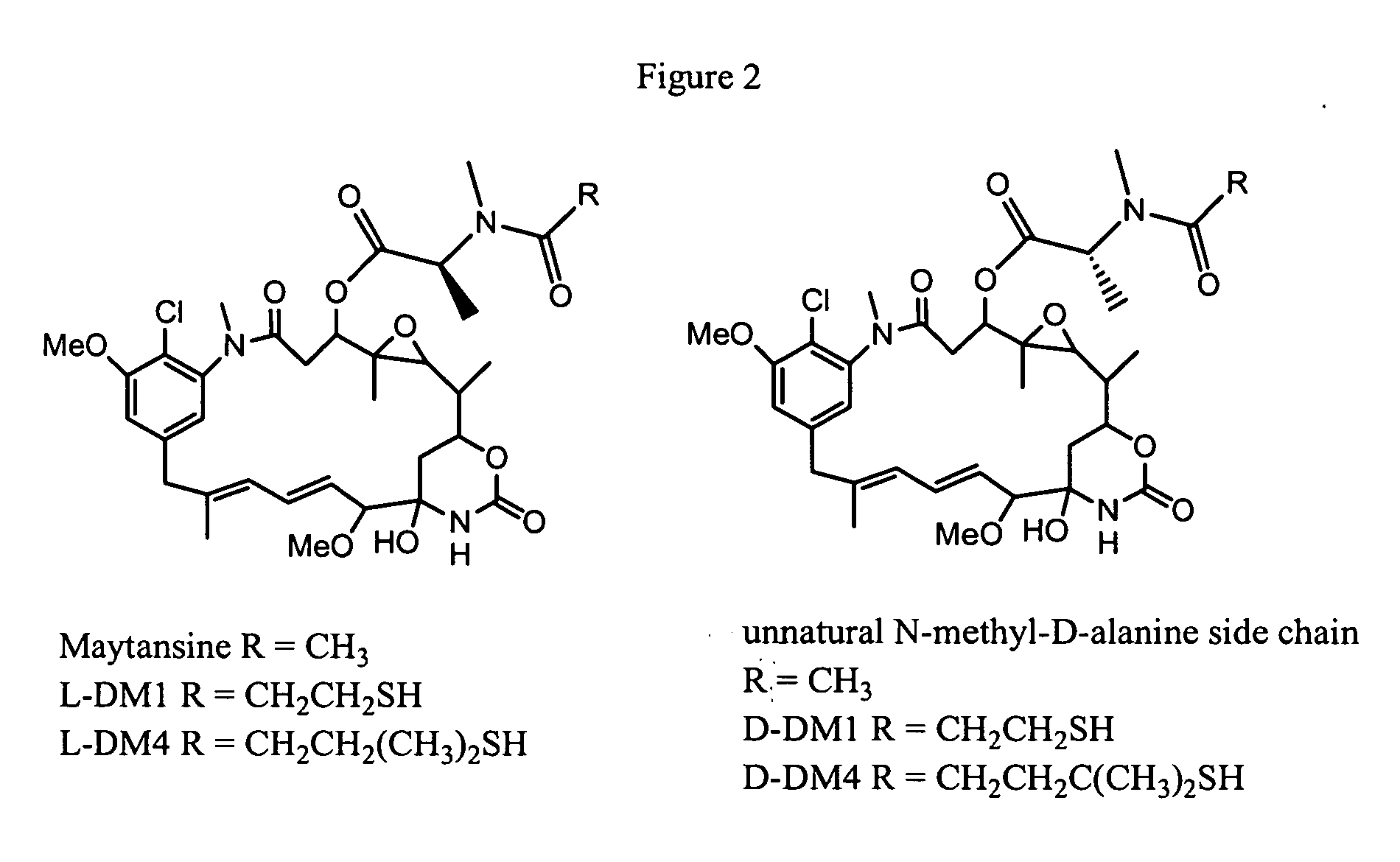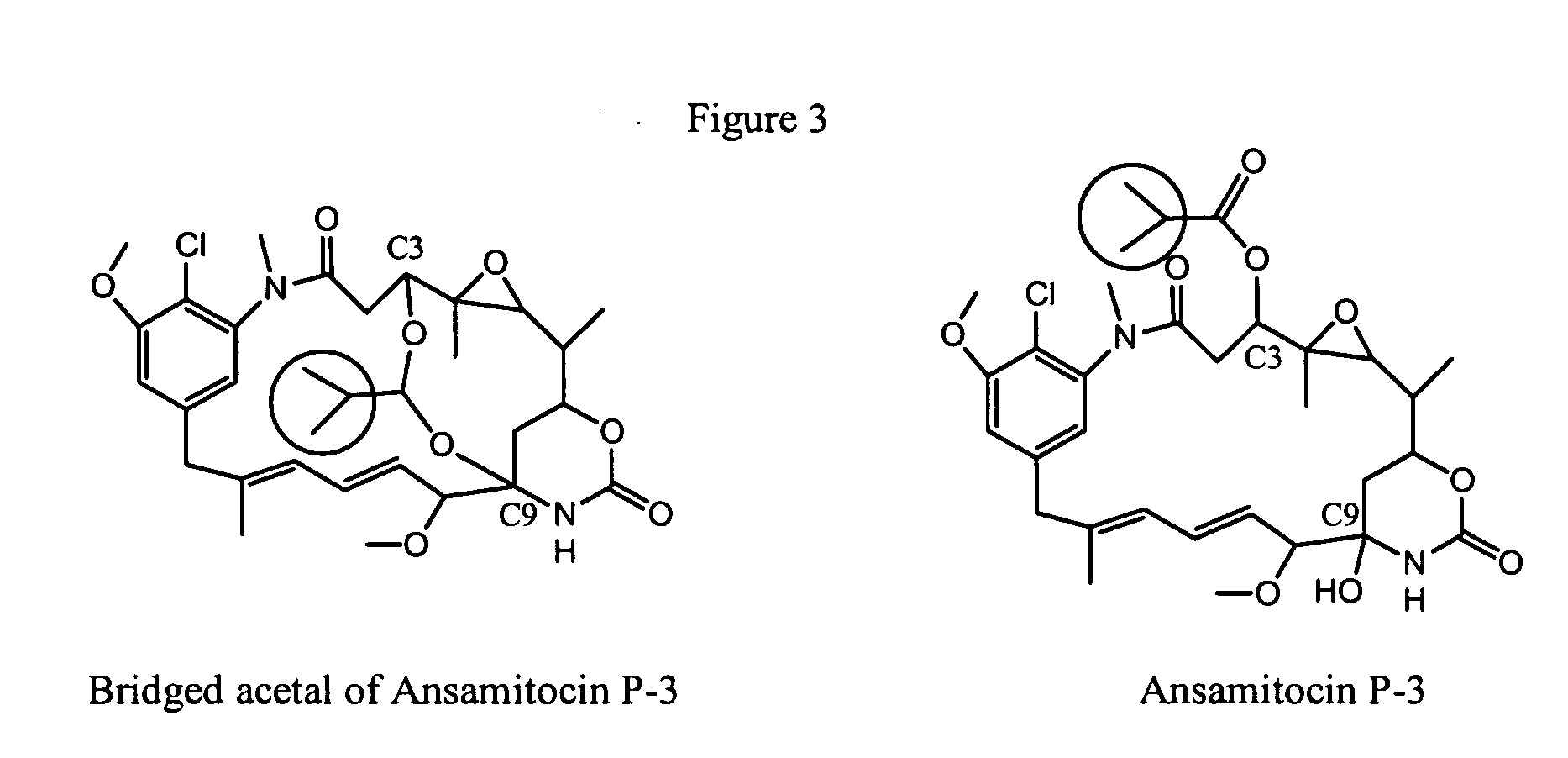Process for preparation of maytansinol
- Summary
- Abstract
- Description
- Claims
- Application Information
AI Technical Summary
Benefits of technology
Problems solved by technology
Method used
Image
Examples
example 1
Preparation of 0.67 M LiAl(OMe)3H.
[0076] A 200 mL three necked flask was equipped with a magnetic stir bar, and a thermometer. A 1 M lithium aluminum hydride solution of LiAlH4 in tetrahydrofuran (71 mL, 71 mmol) and 26.8 mL of tetrahydrofuran were transferred to the flask via syringe. The flask was cooled in a −60° C. bath with stirring until the contents reached −43° C. A solution of 8.7 mL methanol (6.85 g, 214 mmol) in 8.0 mL of tetrahydrofuran was added drop-wise via a syringe while keeping the temperature of the contents between −40° C. and −45° C. The solution was stirred at −45° C. for an additional 10 min.
example 2
Preparation of LiAl(OMe)2.5H1.5.
[0077] A 200 mL three necked flask was equipped with a magnetic stir bar and a thermometer. A 1 M lithium aluminum hydride solution of LiAlH4 in tetrahydrofuran (71 mL, 71 mmol) and 28 mL of tetrahydrofuran were transferred to the flask via syringe. The flask was cooled in a −60° C. bath with stirring until the contents reached −43° C. A solution of 7.25 mL methanol (5.71 g, 178 mmol) in 8.0 mL of tetrahydrofuran was added drop-wise via a syringe while keeping the temperature of the contents between −40° C. and −45° C. The solution was stirred at −45° C. for an additional 10 min.
example 3
Preparation of the Bridged Acetal Compound Shown in Formula (I), R1=CH(CH3)2.
[0078] This example describes preparation of the bridged acetal compound shown in Formula (I), where R1 is CH(CH3)2, reduction of ansamitocins with LiAl(OMe)3H, followed by aqueous formic acid quench. Ansamitocins (3.0 g, 4.72 mmol) were weighed into a three necked flask equipped with a thermometer. Tetrahydrofuran (15 mL) was added to the flask with stirring, and the flask was cooled in a −57° C. cooling bath. Once the contents of the flask reached −35° C., a solution of 0.67 M LiAl(OMe)3H in tetrahydrofuran (56 mL, 37.7 mmol) was added dropwise by syringe using a syringe pump. The temperature of the reaction was maintained between −30° C. and −40° C. throughout the addition. After addition was complete the reaction was stirred for 2 hours at between −34° C. and −37° C. A solution of 88% formic acid (1.85 mL, 2.16 g, 41.5 mmol) in 23 mL of deionized water was added dropwise to the flask at a rate that di...
PUM
 Login to View More
Login to View More Abstract
Description
Claims
Application Information
 Login to View More
Login to View More - R&D
- Intellectual Property
- Life Sciences
- Materials
- Tech Scout
- Unparalleled Data Quality
- Higher Quality Content
- 60% Fewer Hallucinations
Browse by: Latest US Patents, China's latest patents, Technical Efficacy Thesaurus, Application Domain, Technology Topic, Popular Technical Reports.
© 2025 PatSnap. All rights reserved.Legal|Privacy policy|Modern Slavery Act Transparency Statement|Sitemap|About US| Contact US: help@patsnap.com



